
As the Great War was coming to a close, a new perceived threat faced Europe: Bolshevism. Standing in the way of the ‘Reds’ were the ‘White’ Russians: a jumbled amalgamation of monarchists, republicans, conservatives, liberals and leftists. Already bruised and bloodied from the trenches, British, American and French troops were thrown into this chaotic civil war that could not have been further from the grinding stalemates of the Western Front.
In 2023, Anna Reid released her riveting work on the intervention in the Russian Civil War, A Nasty Little War, now in paperback. She spoke with History of War about the intervention troops’ experiences of the conflict, their exposure to the White Army’s anti-Semitism and how intervention contributed to interwar European instability. She also shares her reflections on the current Russo-Ukraine War and the lessons from the Russian Civil War.
How did the British respond to the first reports of the Bolshevik coup and the outbreak of the Russian Civil War in 1917?
The February Revolution was greeted joyfully by all the Allies because everyone thought Russia was going to steamroll over the Austrian and German armies due to its natural resources and enormous population. When Tsar Nicholas II abdicated and handed over to the civilian centre-left government, the other Allies welcomed it as he was a disliked character in the West. People saw him as this blood-stained autocrat and Russia as a politically backward country. There were great hopes for the new government, but it never really managed to take power because, at the same time, there were the Soviets and grassroots committees springing up at every workplace, including the army. The collapse of the army accelerated with mass desertions, and trains full of soldiers left the front to go back home.
This story is from the Issue 136 edition of History of War.
Start your 7-day Magzter GOLD free trial to access thousands of curated premium stories, and 9,000+ magazines and newspapers.
Already a subscriber ? Sign In
This story is from the Issue 136 edition of History of War.
Start your 7-day Magzter GOLD free trial to access thousands of curated premium stories, and 9,000+ magazines and newspapers.
Already a subscriber? Sign In

NAUMACHIA TRUTH BEHIND ROME'S GLADIATOR SEA BATTLES
In their quest for evermore novel and bloody entertainment, the Romans staged enormous naval fights on artificial lakes
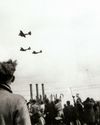
OPERATION MANNA
In late April 1945, millions of Dutch civilians were starving as Nazi retribution for the failed Operation Market Garden cut off supplies. eet as In response, Allied bombers launched a risky mission to air-drop food
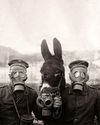
GASSING HITLER
Just a month before the end of WWI, the future Fuhrer was blinded by a British shell and invalided away from the frontline. Over a century later, has the artillery brigade that launched the fateful attack finally been identified?
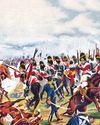
SALAMANCA
After years of largely defensive campaigning, Lieutenant General Arthur Wellesley went on the offensive against a French invasion of Andalusia

HUMBERT 'ROCKY'VERSACE
Early in the Vietnam War, a dedicated US Special Forces officer defied his merciless Viet Cong captors and inspired his fellow POWs to survive
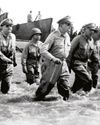
LEYTE 1944 SINKING THE RISING SUN
One of the more difficult island campaigns in WWII's Pacific Theatre saw a brutal months-long fight that exhausted Japan’s military strength

MAD DAWN
How technology transformed strategic thinking and military doctrine from the Cold War to the current day
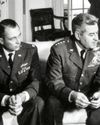
BRUSHES WITH ARMAGEDDON
Humanity came close to self-annihilation with the Cuban Missile Crisis, Broken Arrows’ and other nuclear near misses
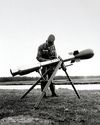
THE DEADLY RACE
How the road to peace led to an arms contest between the USA and USSR, with prototypes, proliferation and the world’s biggest bomb

THE MANHATTAN PROJECT
Einstein, Oppenheimer and the race to beat Hitler to the bomb. How a science project in the desert helped win a war